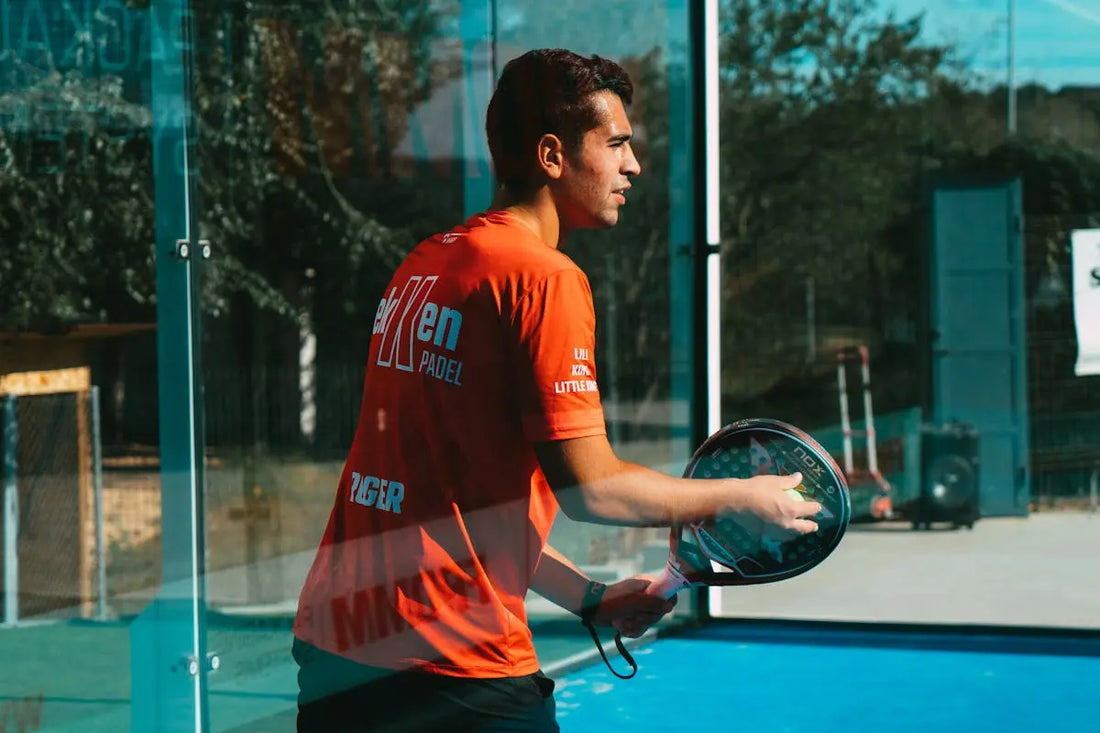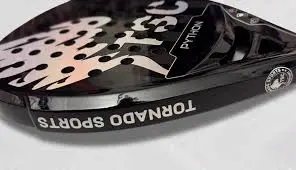Padel, a sport that has been rapidly growing in popularity, requires equipment that enhances performance and provides comfort. Among the various components that make up a padel racket, two materials stand out for their essential roles: carbon and EVA. In this blog, we will explore the significance of these materials, explaining how they contribute to the performance and durability of modern padel rackets. Whether you are a seasoned player or a newcomer to the sport, understanding these materials will help you make informed choices when selecting your next racket.
Understanding Padel Rackets
Padel rackets are distinct from traditional tennis rackets, both in design and material composition. They are solid, without strings, and crafted to optimize ball control and precision. The choice of materials profoundly influences how a racket performs, especially during intense play. This unique structure allows players to harness power while also benefitting from superior maneuverability. To truly appreciate what makes a padel racket exceptional, one must delve into its core components, particularly the role of carbon and EVA.
These innovative materials are not just buzzwords; they are essential to a racket’s overall performance. Carbon, known for its rigidity and lightweight properties, ensures durability and resilience. EVA foam, on the other hand, acts as the cushioning element. Together, they create a balance that enhances gameplay. Understanding how these materials interact can transform the way players approach their game.
The Role of Carbon in Padel Rackets
Carbon has revolutionized the manufacturing of sports equipment, and padel rackets are no exception. High-quality carbon fibers, particularly those with an 18K and 22K count, provide a strength-to-weight ratio that is unmatched. This means players can wield a lightweight racket without compromising on power. The higher the carbon count, the more effectively energy is transferred from the racket to the ball.
With superior carbon structures, players experience enhanced control during gameplay, allowing for precise shots that can turn the tide of a match. Whether smashing the ball with force or executing delicate volleys, the responsiveness of the material enhances every stroke. Moreover, the durability that carbon offers ensures that players won’t have to worry about frequent replacements, making it a cost-effective choice in the long run.
In addition, the lightweight nature of carbon allows for quicker movements on the court. Players can respond swiftly to their opponents, adapting their play style as necessary. The agility provided by carbon-infused rackets contributes significantly to overall game performance, proving that every detail in padel racket design matters.
EVA Foam: Comfort and Performance
EVA foam plays an equally critical role in the construction of padel rackets. As a cushioning material, it absorbs shock, significantly reducing the impact on players’ arms and wrists during play. This is particularly important in a game that can demand quick reflexes and powerful swings. Without proper cushioning, players risk injury and fatigue, ultimately influencing their performance on the court.
The choice between black and white EVA foam can also impact a racket’s feel and playability. Black EVA is known for its higher density and resilience, while white EVA offers a softer touch, perfect for players looking for a more forgiving impact upon ball contact. Thus, a player’s personal preference will guide their choice, tailoring their equipment to better suit their style of play.
Overall, EVA foam contributes not just to comfort but also to performance. With the right EVA cushioning, players can execute powerful shots without worrying about damaging their joints. The combination of comfort and performance is why many professional players choose rackets featuring high-quality EVA foam.
How Carbon and EVA Work Together
The synergy between carbon and EVA foam is a crucial aspect of modern padel rackets. While carbon provides the structural integrity and strength necessary for powerful shots, EVA foam delivers the cushioning needed for comfort during extended play. This partnership results in a racket that not only withstands the rigors of the game but also feels good in players’ hands; the perfect combination for an enjoyable playing experience.
When players strike the ball, the carbon frame quickly responds to their input, translating their energy into speed and power. Simultaneously, the EVA foam softens this impact, protecting players from harsh vibrations that can arise from hitting the ball. This dynamic interaction significantly enhances player confidence, allowing them to focus on strategy rather than discomfort.
Furthermore, the way these materials complement each other can influence the racket’s overall responsiveness. A well-designed racket that balances carbon and EVA can improve shot precision and agility, providing players with an edge as they navigate through fast-paced matches. Mastering how to utilize the advantages offered by both materials can elevate a player’s game to new heights.
Choosing the Right Padel Racket for You
Selecting the right padel racket involves more than just personal taste; understanding the characteristics of carbon and EVA can guide this process. Players need to consider their style of play, level of experience, and any specific preferences they may have regarding weight and balance. Those who rely on powerful strokes may prefer a racket with higher carbon content for optimal control. On the other hand, beginners might prioritize comfort and opt for a racket with generous EVA cushioning.
It’s important to test various rackets to find the best fit. Many sports shops offer demo programs that allow players to experience different models on the court. This hands-on approach is valuable, as personal comfort and performance can vary widely between models. As players become familiar with how different aspects influence their game, they can make informed decisions that suit their unique needs.
The Evolution of Padel Racket Technology
Padel racket technology has evolved remarkably over the years, influenced by advancements in material science and engineering. As players demand more from their equipment, manufacturers respond by innovating with cutting-edge materials like carbon and improved formulations of EVA. These developments not only enhance performance but also ensure sustainability in production processes, an important trend in today’s environmentally conscious world.
New techniques in carbon construction and EVA manufacturing have led to lighter, stronger, and more responsive rackets. Innovations such as 3D printing and composite layering are paving the way for customized designs that cater to individual player needs. This blend of technology and personalization reflects a growing understanding of how materials can affect player performance at every level.
As the sport continues to grow in popularity, we can expect continuing advancements in padel racket technology. From unique shapes to specialized grips, the future holds exciting possibilities. Staying informed about these changes allows players to make the best possible choices for their game, ensuring they remain at the top of their performance.
The Future of Padel Racket Materials
In summary, the integration of carbon and EVA in padel rackets significantly enhances performance, comfort, and durability. Players looking to elevate their game should consider the advantages these materials offer when choosing their equipment. As the sport continues to evolve, so will the technologies behind padel rackets, making it an exciting time for enthusiasts and competitors alike.


